Difference between revisions of "BW-DM/en"
(Updating to match new version of source page) |
(No difference)
|
Latest revision as of 13:29, 8 January 2022
| BW-DM.C | |||||||||
|---|---|---|---|---|---|---|---|---|---|
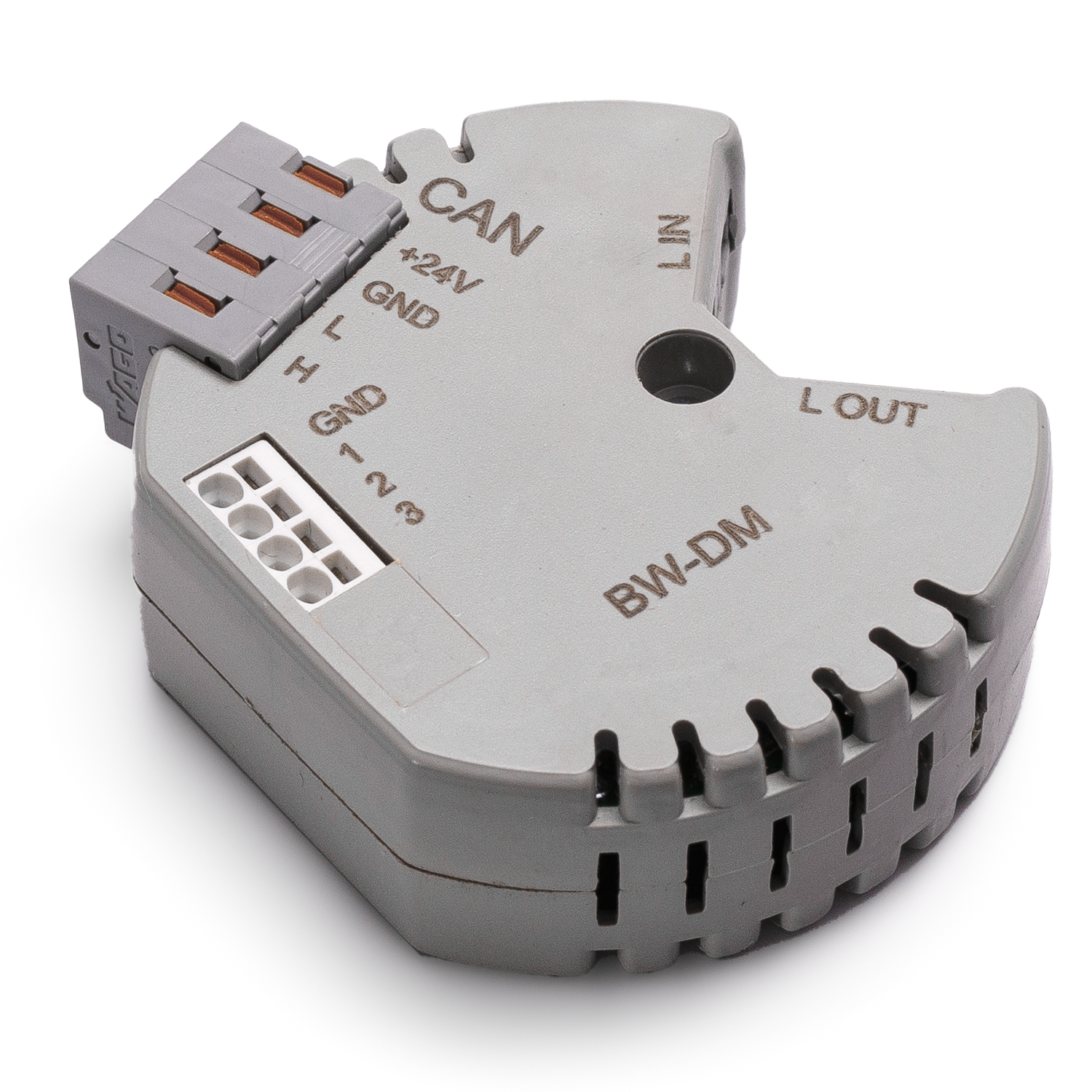 | |||||||||
| |||||||||
| |||||||||
| |||||||||
DIMMER
This single-channel dimmer is designed for smooth control of electrical load (non reactive load). It has 3 input channels for connecting buttons and reed switches. MOSFET type.
CAUTION! All work related to the installation, connection, setting up, service and support must be carried out by qualified personnel with sufficient skills and experience in working with electrical equipment. To avoid the risk of fire, electric shock, damage to the system and/or personal injury, the system installation and assembly must be performed in accordance with the instructions listed below:
- all connectivity work must be carried out with the power turned OFF;
- use appropriate tools and personal protection against electric shock;
- do not use damaged cables, wires and connectors;
- avoid folding the cables and wires;
- do not apply excessive force to the wires by kinking or pressing them too hard: the inner conductors of the cables and wires may get stripped or damaged;
- do not use the power socket with poor contacts to connect;
- do not exceed the load limit parameters specified in the manual;
- the supply conductors wire section is subject to the specifications for current density limit, insulation type and wire material. Light section can result in cable overheating and fire.
When the power is on, NEVER:
- connect/disconnect the connectors;
- open modules and sensors.
Module view

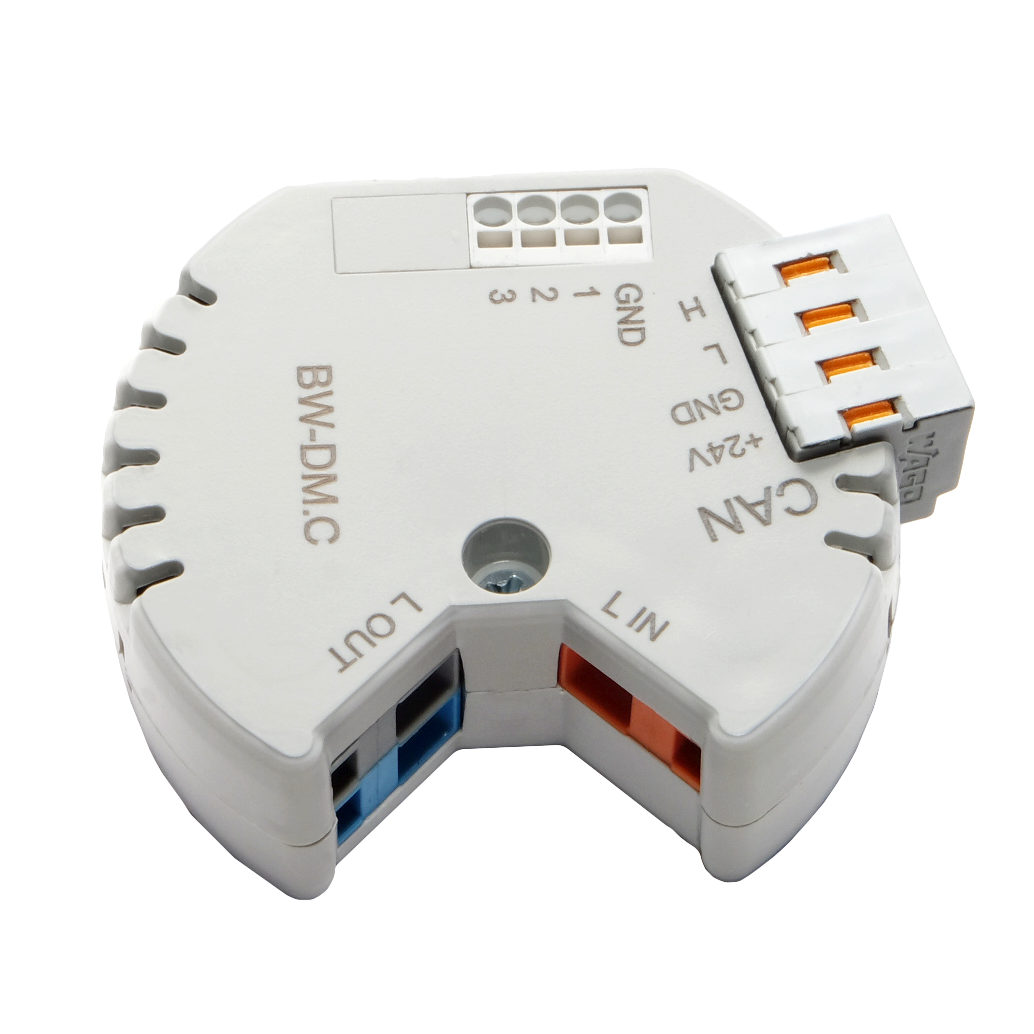
Example of connection
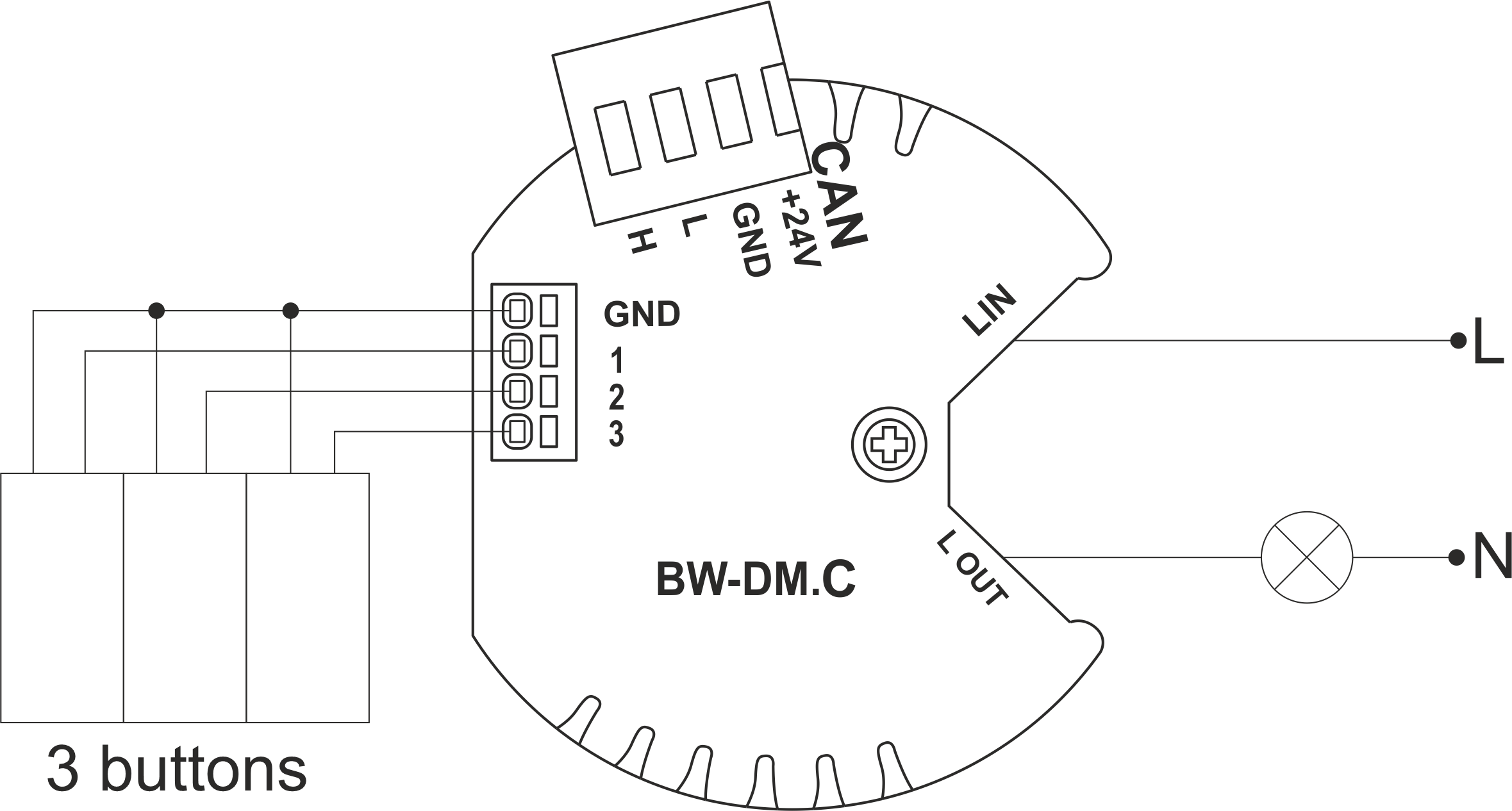
Module parameters
| Parameter name | Value |
|---|---|
| Input channels qty | 3 |
| Output channels qty | 1 |
| Input voltage | 100-250V |
| Current type | AC |
| Max load | 0.9 A(200W at 220V) |
| Min load | 0.09 A(20W at 220V) |
| Power supply | 11.5 … 27.5 V DC from CAN |
| Max current(24V) | 40 mA |
| Temperature sensor line max length | 0.3m |
| Bus type | CAN (4-wire) |
| Equipment installation type | Free |
| Case material | ABS |
| Protection | IP40 |
| Temperature range | -10 … +50 °C |
| Size | 45x42x14 mm |
| Weight | 25 g |
Supported load types
| Supported load type | Power | |
|---|---|---|
 |
Conventional incandescent lamps | 20-200W |
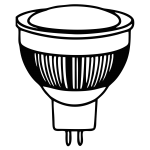 |
Halogen light sources | 20-200W |
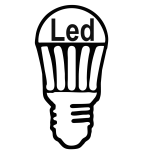 |
LED lamps with dimming support | 20-200W |
 |
Energy saving lamps with dimming support | 20-200W |
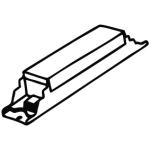 |
Electronic ballasts with dimming support | 20-200W |
Module installation and connection procedure
- Connect the outputs.
- Connect the inputs.
- Connect the CAN connector.
- Configure the module using LT setup.
- Apply power to the load.
- Check all equipment for proper operation.
Module shut-off and deinstallation procedure
- Disconnect the power from the load.
- Disconnect the CAN connector.
- Disconnect the inputs.
- Disconnect the outputs.
Dimmer workflow
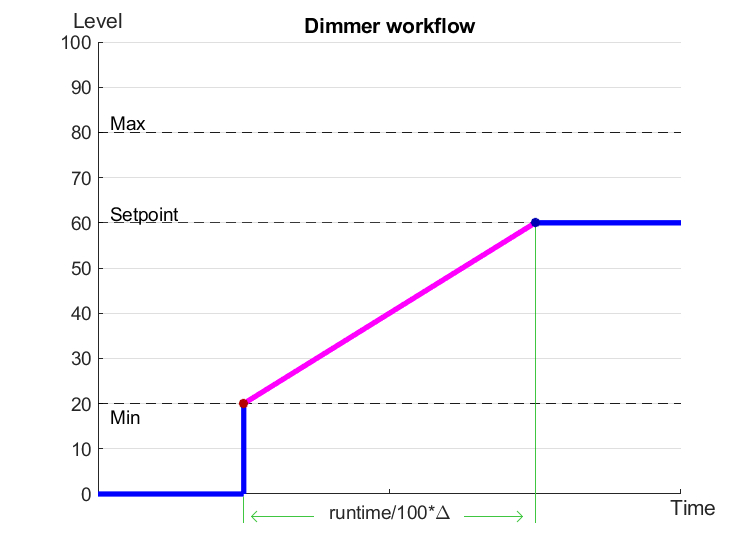
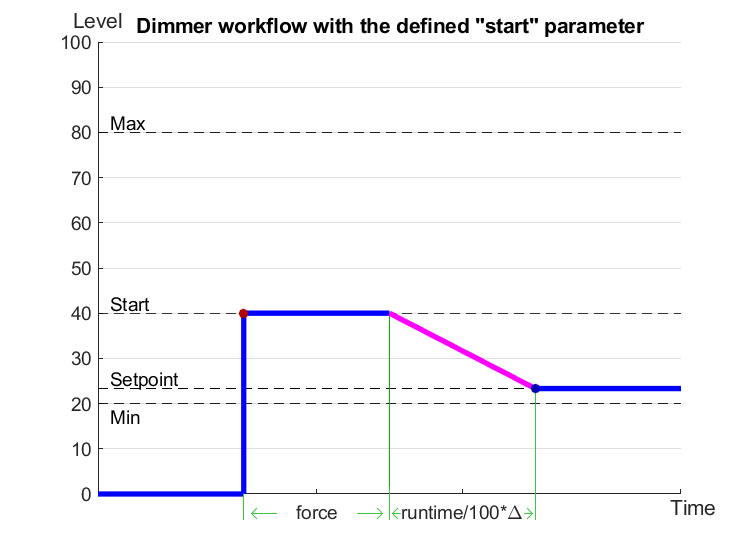
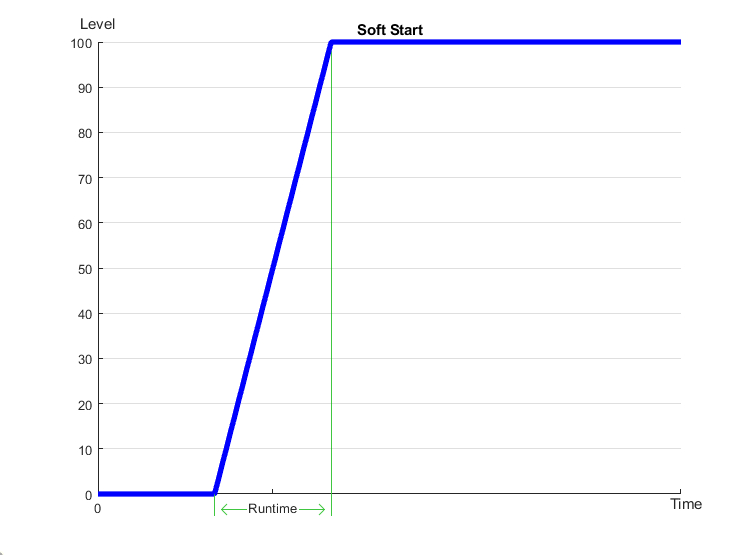
Linear, LED and Halogen workflows
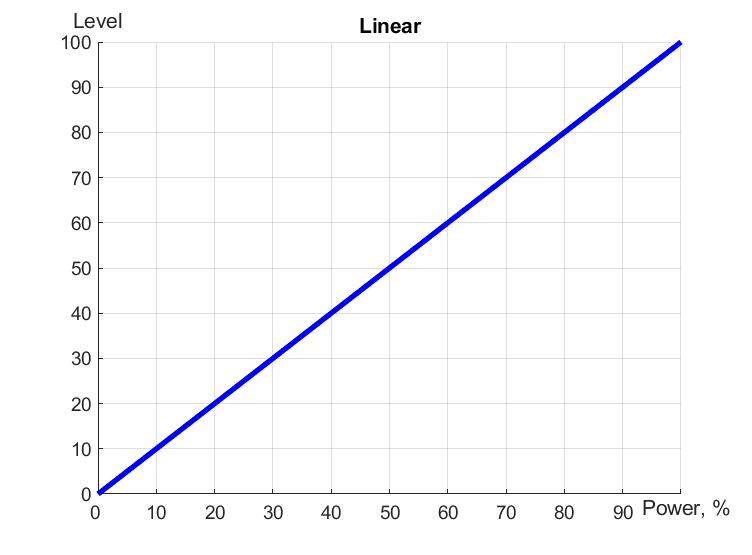
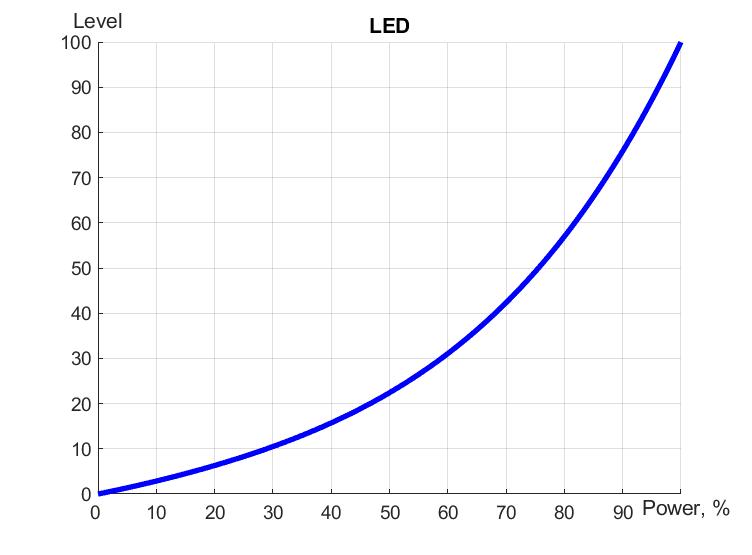
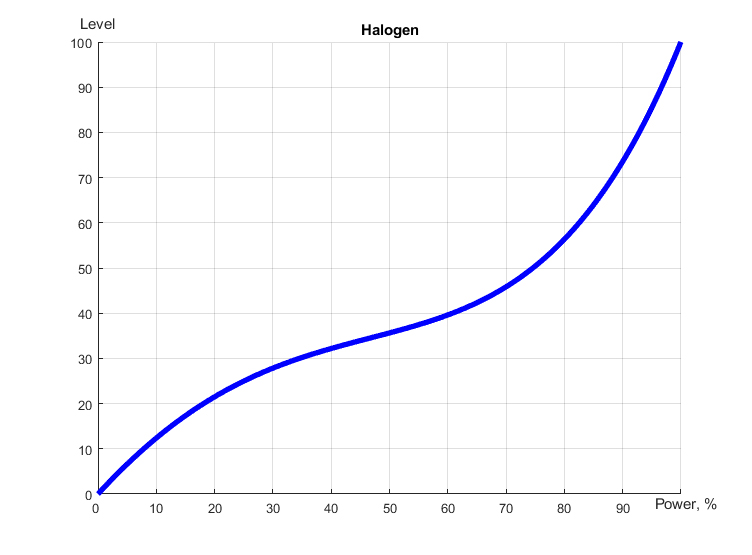
HW settings
| Name | Type, range | SUBID | Default | Description |
|---|---|---|---|---|
| def | integer 0-250 | 1 | 100 | The default brightness level in case of a power reset (1..250). Example: def=250 |
| min | integer 0-100 | 1 | 0 | Minimum dimming level, example: min=10 |
| max | integer 0-100 | 1 | 100 | Maximum dimming level, example max=95 |
| start | integer 0-100 | 1 | 0 | The Start function is used for lamps that lack the minimal voltage to get turned on. If the set value is lower than the start value, the lamp is turned on at the start value and them the light is dimmed down to the set level. Example: start=60 |
| force | integer 0-100 | 1 | 10 | Time duration of the starting value (measured in milliseconds). Example: force=20 |
| runtime | integer 0-60000 | 1 | 1000 | Runtime is the speed of changing the brightness from ‘min’ to ‘max’ (measured in milliseconds). Example: runtime=1000 |
| protect | integer 0;1 | 1 | 0 | Overload Protect. 0(off); 1 (on), example: protect=0 |
| offset | float(+/- 0…39) | 30 | 0 | sensor values offset;
For example, offset is -3.8 : 1hw="offset='-3.8'"
|
| mode | string | 98 | disabled | Frequency of pulse-width modulation in Hz for item with direct current.
Example: mode='dc400' |
| dm | char | 98 | 'g' | Each char is responsible for the type of a particular channel
Example: dm='s' |
| in | char[3] | 98 | 'BBB' | Each char is responsible for the type of a particular channel
And you can also connect one temperature sensor: 1hw="in='T+-'"
Example: in='BCB' |
Input HW configuration
| chanel | 1 | 2 | 3 | 4 | 5 | 6 |
|---|---|---|---|---|---|---|
| Button nButton Switch Contact nContact none |
+ | + | + | + | + | + |
| LedButton nLedButton |
+ | + | + | + | + | |
| Temperature Sensor | + |
1<item addr="491:1" auto-period="600" cfgid="72" name="Dimmer" hw="def=200 min=30 max=88 start=35 force=20 runtime=1000" type="dimer-lamp" uniq_id="4610"/>
2<item addr="491:11" cfgid="72" name="Switch" type="switch" uniq_id="4611"/>
3<item addr="491:12" cfgid="72" name="Switch" type="switch" uniq_id="4612"/>
4<item addr="491:13" cfgid="72" name="Door" type="door-sensor" uniq_id="4616"/>
5<item addr="491:97" cfgid="72" name="Temperature" system="yes" type="temperature-sensor" uniq_id="4614"/>
6<item addr="491:98" cfgid="72" hw="dm='G' in='BSH'" name="Temperature" system="yes" type="temperature-sensor" uniq_id="4615"/>